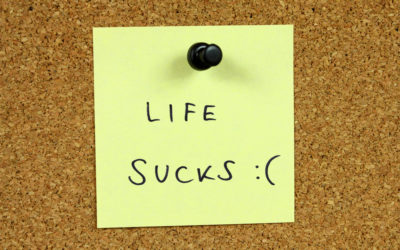For nearly 30 years, I’ve been exploring the source of impact in working with others, seeking answers to questions like:
- What are the differences that make a real and lasting difference?
- What works most of the time as opposed to occasionally?
- How do you follow Hippocrates dictum to “first, do no harm”?
The question I’ve probably spent the most time exploring is this:
How do we maximize impact while minimizing the time and effort it takes to consistently achieve it?Click To TweetIn the 3rd century BC, the Greek philosopher-scientist Archimedes introduced the principle of leverage with a phrase I had learned in school as “Give me a long enough lever and a place to stand, and I shall move the world.”
For years, I focused my search on finding better levers to move the world – that is, techniques taken from therapeutic disciplines ranging from NLP to Psychosynthesis and change management methodologies ranging from Affirmative Inquiry to Force Field Analysis.
Around the same time that I was personally impacted by the principles behind the inside-out understanding, I came across a different translation of Archimedes dictum that changed the direction of my search for impact:
“Give me a place to stand, and with a lever I will move the whole world.”
For some reason, this simple shift in syntax led to a complete change in the direction I was looking to find leverage. Instead of continuing in my quest for “cutting-edge” levers, I began looking for solid ground – a better place to stand.
While I could teach courses on what I’ve seen (and indeed have and continue to), in today’s blog I wanted to share a couple of the game-changing insights I’ve had over the past decade or so that have completely transformed the way I think about impact and the work I do with others…
1. The Subtle Knife of Truth
In the trilogy of fantasy novels collectively known as His Dark Materials, author Phillip Pullman introduces the idea of a “subtle knife” that can literally cut through the inter-dimensional fabric of the universe and allow us to pass between worlds. While this knife is fantastical by design, metaphorically it speaks to the possibility of something that allows us to move effortlessly from one reality to another.
I have long written about these kinds of transformative experiences, where nothing changes on the outside but everything is different experientially. What I’ve come to see more recently is that these transformations are always instigated by a deeper seeing – that is, seeing something more true about life than what we previously thought and believed.
The Scottish mystic Syd Banks wrote that:
“When you hear the Truth it is what is called a realization.
And with this realization the breath of life goes into you.
It actually becomes alive! It becomes another reality!
And it takes itself and it sweeps negativity out of your life.”
In this sense, the “subtle knife” that opens us up to whole new worlds of possibility is a deeper seeing of fundamental, universal truths.
Some of the many examples of this I’ve seen in my own work include:
- A cancer patient seeing that their fears for the future were made of the same stuff as their hopes and dreams and that one had no more reality to it than the other. As a result, they relaxed their grip on their thinking and found themselves living in a deep appreciation of the present moment. While over time they became free of the cancer, the impact on their well-being was immediate and palpable.
- A successful entrepreneur who was practically housebound by anxiety saw that they had no control over what thoughts came into their head and consequently had no actual control over what they thought, felt, or did. Paradoxically, seeing this lack of control freed them from the anxiety of trying to control themselves and the universe, and within weeks of this insight they were able to not only leave home but drive on the freeway and take their children on a long-awaited holiday.
- A life-long movie executive who felt victimized by the studio where they worked realized that the stress-related illnesses they were suffering from were caused not by their situation but by a misunderstanding of how the mind works. As a result, they were able to not only take time off to recharge and renew themselves, but also to start fresh at a new studio with a sense of hopefulness and possibility they hadn’t felt since early on in their career.
In this sense, the more we see things that are “capital T” Truth, not subject to the vagaries of our ever-changing beliefs and moods, the more solid the ground on which we walk and the more leverage we have, regardless of which levers we choose to use.
2. Transformative Presence
Some years ago, in the early days of Supercoach Academy, I brought the author and management consultant Nancy Kline in to spend a couple of days with our students. Within moments of her stepping up to the front of the room, the entire group was gripped in a way that was difficult to quantify. In trying to explain it to my wife afterwards, I said that it was the first time where I’d ever been in a room where we wanted to give the speaker a standing ovation before they’d spoken a single word.
In my work, I’ve coined the term “transformative presence” to describe that ineffable quality of being that allows some people to have a tangible impact on others regardless of what they say or do. We could call it “the x-factor”, but that is by design too vague a term to be useful if we want to use it for ourselves; we could equally call it “charisma”, but that often has a connotation of brash charlatanism and is at odds with the quiet power that seems to emanate from true agents of impact and change.
While standing in however much of the Truth of life they’ve seen may well be a huge factor in transformative presence, another principle I’ve seen to be at work is what I recently heard described as “overflow vs. effort”. In other words, many people try to impact others with a kind of cultivated detachment that has come to be seen as professionalism. This approach to change is inherently effortful – it is dependent on the efforts of the practitioner, the client/patient, or both.
“Overflow”, by way of contrast, is both natural and effortless. Imagine a multi-tiered fountain, or a tree-shaped tower of champagne glasses from a classic movie. As the one level or glass at the top is filled to overflowing, all the levels and glasses underneath are filled up without the level or glass at the top ever emptying.
The same is true for each of us. When we fill up with well-being, that well-being inevitably spills over onto and into everyone around us. The same with love, the same with peace, the same with quiet.
This is the very essence of “guru-yoga”. The student initially fills up with the overflow of love from the guru, or is struck gloriously dumb by the sheer quiet of their teacher. Then, over time, they discover that the same source of love and quiet is in them, and they are no longer dependent on the guru or indeed any teacher. Whey they have filled to overflowing, they too begin to impact the world, regardless of what they do or don’t do for a living.
While it may be redundant to add a “point” to these insights, I’ll finish by pointing to a couple of the obvious implications I’ve experienced in my own work with clients, group participants, and students of the art of change.
The first is this:
If I want to be more impactful with others, I must first seek the truth within myself. The more solid my own grounding, the more any lever it occurs to me to use will move the world.Click To TweetHere’s the second:
If I want to increase my “transformative presence”, I do it by filling myself up first. Instead of seeking to help others get quiet, feel good, and live with more ease and grace, I find so much quiet, good feeling, ease, and grace inside myself that it overflows into the world without any effort or even intention on my part.
With all my love,![]()










